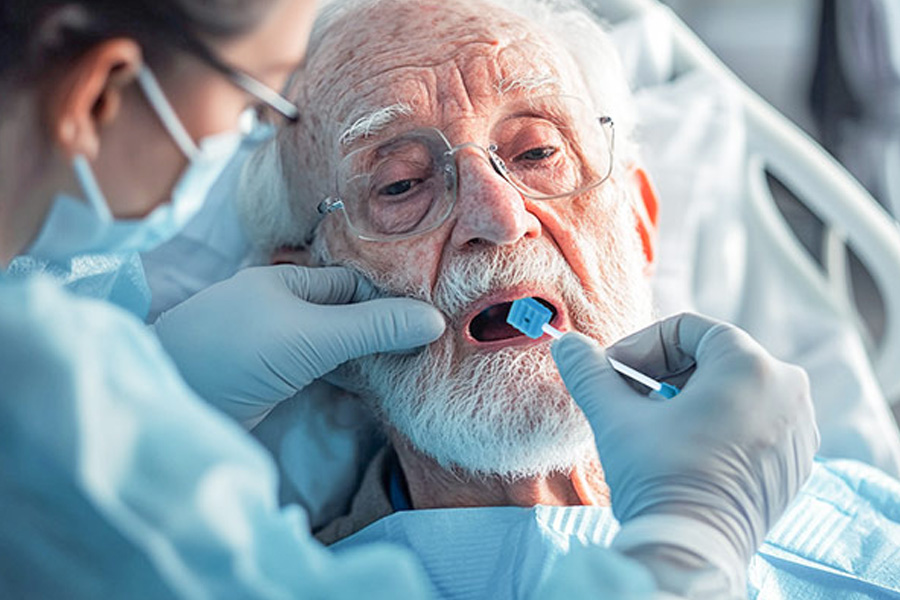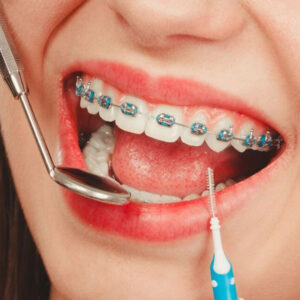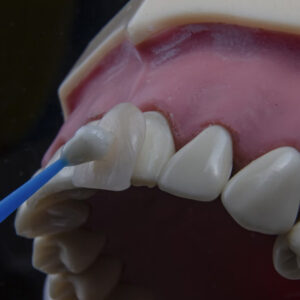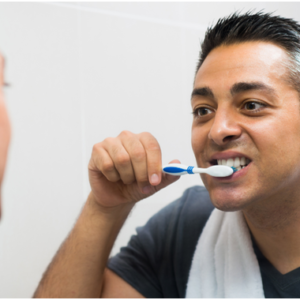Best Practices for Using Oral Care Swabs in Hospital and Home Care Settings

Image Source: www.medical-sponge.com
A vital component of health that is sometimes disregarded is oral hygiene, particularly for those who are unable to brush their teeth on a regular basis because of age, physical restrictions, or illness. This is particularly relevant in hospital and home care settings where patients may be bedridden, recovering from surgery, or suffering from chronic conditions. In these settings, keeping your mouth clean is crucial for comfort as well as for avoiding infections like oral thrush, pneumonia, and gum disease. One of the most effective tools for oral care in these settings is the mouth sponge on a stick, often referred to as an oral care swab.
Oral care swabs, like mouth sponges on a stick, are designed to provide gentle cleaning of the mouth, gums, and teeth without the need for traditional toothbrushes. These tools are particularly helpful for patients who have limited mobility, cognitive impairments, or those who are in a weakened state. In this article, we will explore best practices for using oral care swabs in both hospital and home care settings, ensuring that patients receive the best possible care while maintaining oral hygiene.
Choose the Right Oral Care Swab
Not all oral care swabs are created equal, so it’s essential to choose the right type for the patient’s specific needs. Oral sponges on a stick come in a variety of shapes, sizes, and materials. For example, swabs with soft, absorbent sponge tips are ideal for gently cleaning the mouth and gums, while those with a textured surface may be better for scrubbing teeth or removing plaque. It’s also important to consider whether the swabs are pre-moistened with a cleaning solution or mouthwash, or whether they require moistening before use.
In hospitals, where patients may have more complex health issues, it is often necessary to select swabs that are designed to manage specific conditions, such as dry mouth or oral thrush. For elderly patients in home care settings, dental sponge swabs with gentle sponges that are easy to use and maneuver may be the most appropriate option. Always consult with healthcare professionals to ensure that the right type of swab is being used.
Prepare the Patient’s Mouth
Before using an oral care swab, it’s important to prepare the patient’s mouth to ensure maximum effectiveness. In hospital and home care settings, patients may have buildup of food particles, saliva, or plaque in their mouths, which can make cleaning more challenging. Begin by gently moistening the mouth sponge on a stick with a small amount of water or mouthwash. This will help to soften the mouth and gums, making it easier to remove debris and bacteria.
For patients who have dry mouth (a common issue in elderly individuals or those taking medication), using a hydrating solution or mouthwash designed for dry mouth can help provide relief and make the cleaning process more comfortable. If the patient is able, gently encourage them to open their mouth. If they are unable to do so, caregivers may need to use a combination of gentle pressure and techniques to open the mouth without causing discomfort.
Use Gentle, Controlled Motions
When using mouth sponges on a stick, it’s crucial to be gentle and deliberate in your movements. The sponge should be used in slow, controlled strokes, starting with the outer surfaces of the teeth and gums, and moving inward toward the tongue and roof of the mouth. For patients who are unable to assist with their own care, caregivers should ensure that the process is as comfortable as possible, minimizing any risk of injury or discomfort.
For patients with delicate or inflamed gums, be extra cautious. Apply minimal pressure and avoid scrubbing, as this could cause pain or damage. If using the swabs on a bedridden patient, it’s helpful to gently support their head and ensure that they are in a comfortable position before proceeding with the cleaning. The procedure can be less traumatic for the patient and more successful in a quiet and comfortable setting.
Target Hard-to-Reach Areas
The beauty of mouth sponges on a stick is that they allow caregivers to reach areas of the mouth that are difficult to clean using traditional toothbrushes. This covers the underside of the tongue, the inside of the cheeks, the roof of the mouth, and the back of the mouth. Although frequently disregarded, these regions are essential for avoiding infection and bacterial accumulation. By using the swab to gently wipe these surfaces, caregivers can help maintain overall oral hygiene.
For patients in hospital settings, where oral infections are more common due to weakened immune systems or medical procedures, paying extra attention to these hard-to-reach areas is critical. If the patient has a feeding tube or is unable to swallow properly, ensuring that the mouth is clean can help prevent aspiration pneumonia, a serious condition that can occur when bacteria from the mouth enter the lungs.
Dispose of the Swab Properly
After using mouth swabs for elderly or any type of oral care swab, it’s important to dispose of the swab correctly. Reusing these swabs can result in contamination and illness because they are usually intended for a single usage. In hospital and home care settings, ensure that caregivers have easy access to waste disposal bins that are close to the patient’s bed or care area.
Additionally, caregivers should always wash their hands thoroughly before and after using oral care swabs to prevent the spread of bacteria. It is also important to ensure that the swabs are stored in a clean, dry area before use to maintain their hygienic properties.
Monitor for Oral Health Issues
Oral care should be an ongoing part of a patient’s daily routine, especially for those who are in hospital or home care settings. Regular use of mouth sponges on a stick can help prevent oral infections, reduce bad breath, and maintain overall oral health. Caregivers should also be vigilant for any signs of oral health issues, such as bleeding gums, mouth sores, or changes in the color or texture of the tongue. For additional assessment and care, it’s critical to notify a healthcare provider of any anomalies found.
Conclusion
Oral hygiene is a vital part of overall health care, particularly for patients with limited mobility or those in hospital and home care settings. Mouth sponges on a stick and mouth swabs for elderly are essential tools in maintaining oral health, preventing infections, and improving patient comfort. By following best practices—choosing the right swabs, preparing the patient’s mouth, using gentle motions, targeting hard-to-reach areas, disposing of swabs properly, and monitoring for issues—caregivers can ensure that patients receive the best possible care. Regular oral care with the right tools can make a significant difference in a patient’s health and well-being, enhancing their quality of life and reducing the risk of complications.




